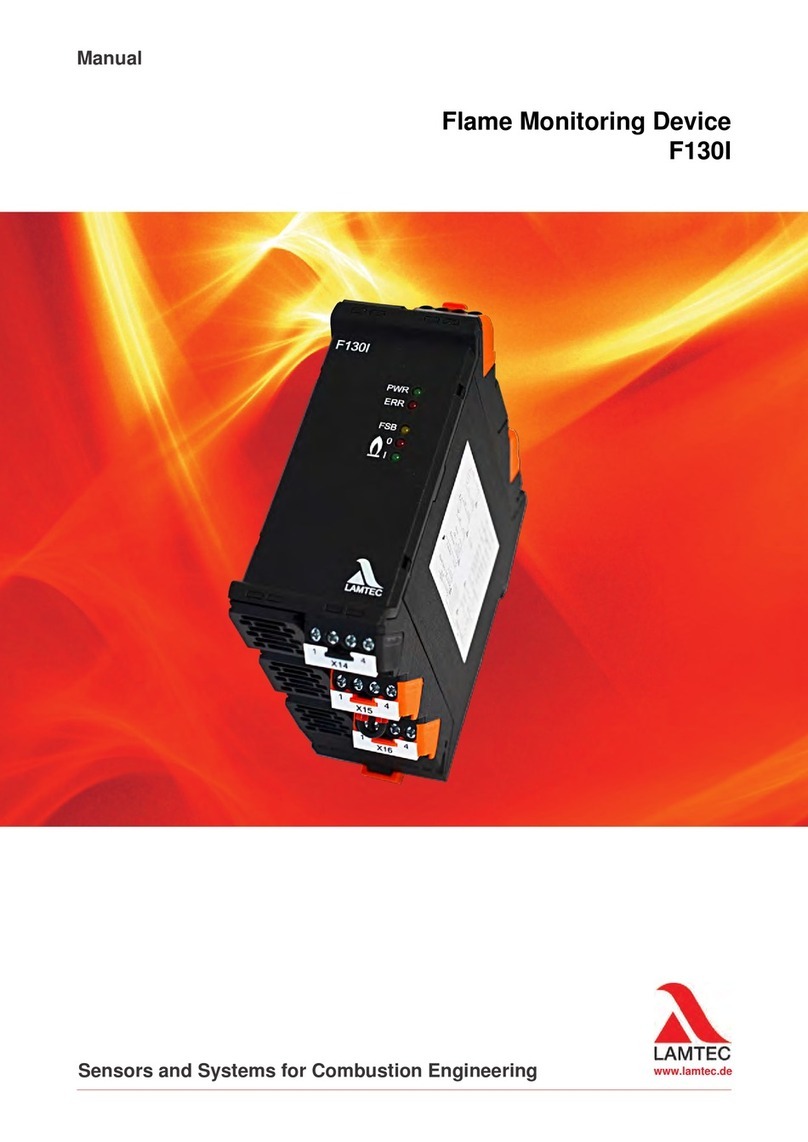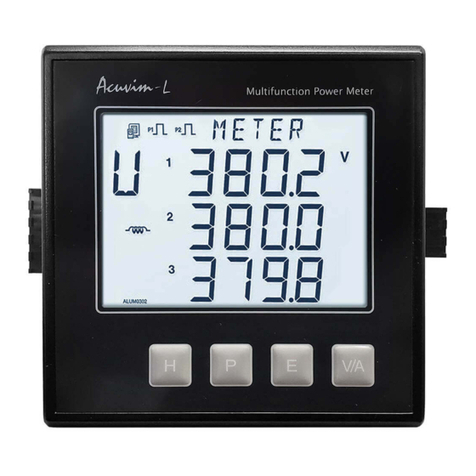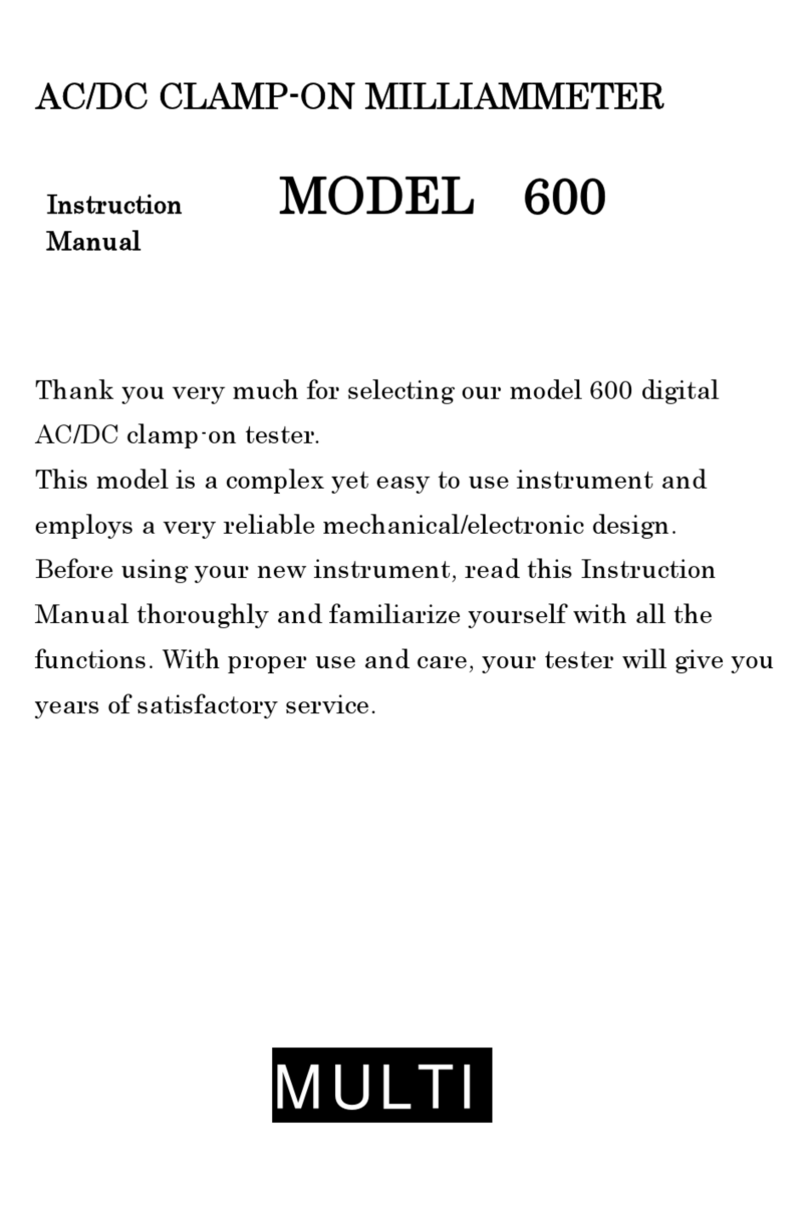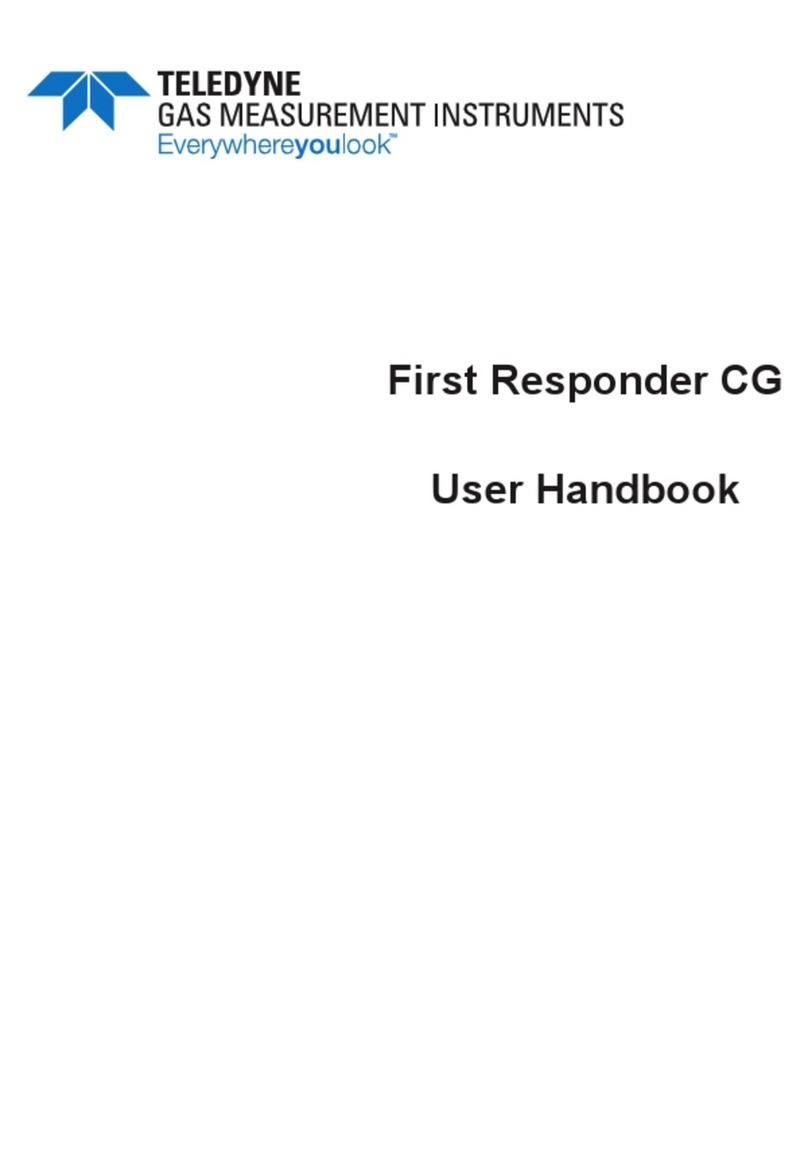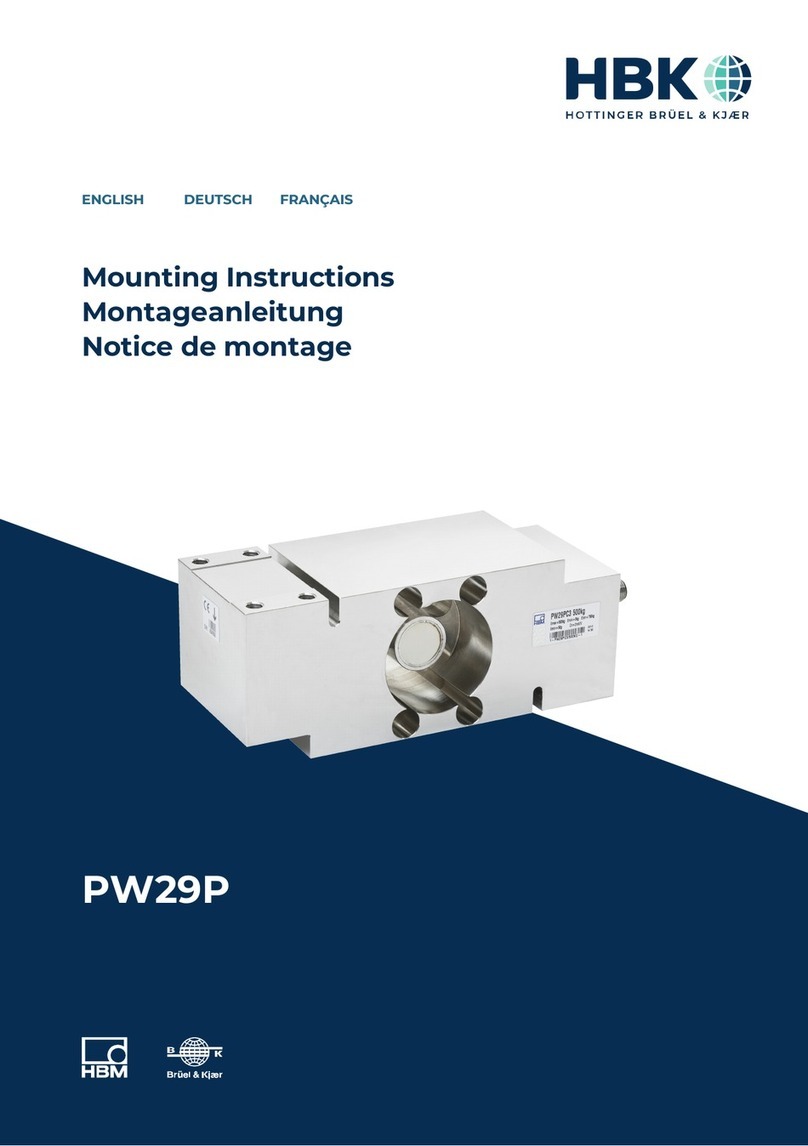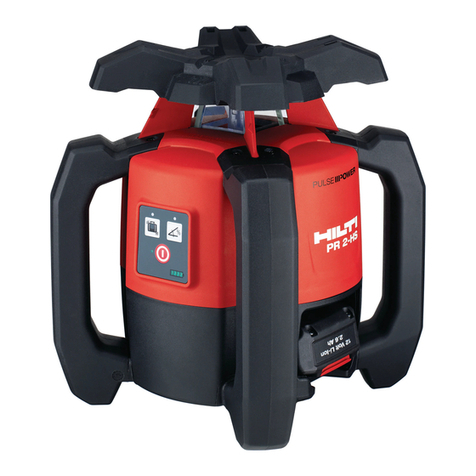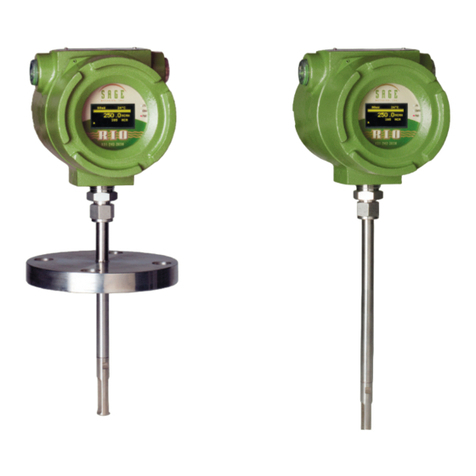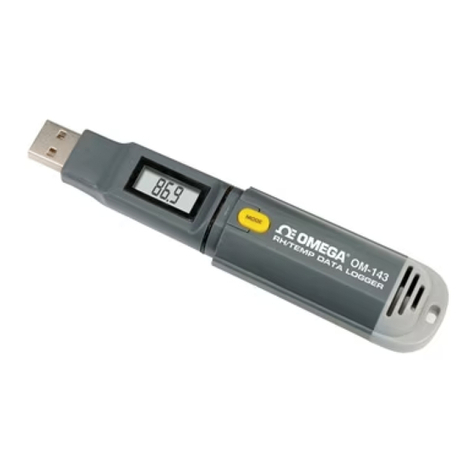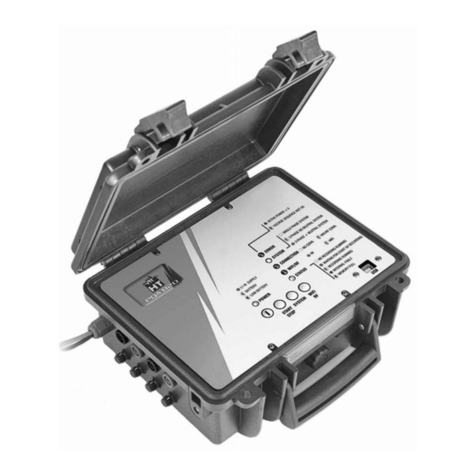SSK SSK513 User manual

Installation & Operation Manual
Electromagentic Flow Meter
SSK513
IOM-113-01-EN (2014)
51301-113 Rev.1

SSK513 Electromagnetic Flow Meter
Page 2 March 2014

CONTENTS
SAFETY PRECAUTIONS AND INSTRUCTIONS . . . . . . . . . . . . . . . . . . . . . . . . . . . . . . . . . . . . . .5
SYSTEM DESCRIPTION . . . . . . . . . . . . . . . . . . . . . . . . . . . . . . . . . . . . . . . . . . . . . . . . . . . . .5
UNPACKING AND INSPECTION . . . . . . . . . . . . . . . . . . . . . . . . . . . . . . . . . . . . . . . . . . . . . . .6
Rigging, Lifting and Moving Large Units . . . . . . . . . . . . . . . . . . . . . . . . . . . . . . . . . . . . . . .6
METER LOCATION, ORIENTATION AND APPLICATIONS . . . . . . . . . . . . . . . . . . . . . . . . . . . . . . . .8
8
Pipelines and Fluid Flow. . . . . . . . . . . . . . . . . . . . . . . . . . . . . . . . . . . . . . . . . . . . . . . . . .8
Meter Orientation. . . . . . . . . . . . . . . . . . . . . . . . . . . . . . . . . . . . . . . . . . . . . . . . . . . . . .9
Vertical Placement . . . . . . . . . . . . . . . . . . . . . . . . . . . . . . . . . . . . . . . . . . . . . . . . . . . . .9
Horizontal Placement . . . . . . . . . . . . . . . . . . . . . . . . . . . . . . . . . . . . . . . . . . . . . . . . . . .9
Straight Pipe Requirements . . . . . . . . . . . . . . . . . . . . . . . . . . . . . . . . . . . . . . . . . . . . . . 10
Pipe Reducer Requirements . . . . . . . . . . . . . . . . . . . . . . . . . . . . . . . . . . . . . . . . . . . . . . 10
Chemical Injection Applications. . . . . . . . . . . . . . . . . . . . . . . . . . . . . . . . . . . . . . . . . . . . 11
Partially-Filled Pipe Situations . . . . . . . . . . . . . . . . . . . . . . . . . . . . . . . . . . . . . . . . . . . . . 12
METER GASKETS AND GROUNDING . . . . . . . . . . . . . . . . . . . . . . . . . . . . . . . . . . . . . . . . . . . 13
Meter/Pipeline Connection Gaskets . . . . . . . . . . . . . . . . . . . . . . . . . . . . . . . . . . . . . . . . . 13
Meter Grounding . . . . . . . . . . . . . . . . . . . . . . . . . . . . . . . . . . . . . . . . . . . . . . . . . . . . . 13
Conductive Pipe Grounding . . . . . . . . . . . . . . . . . . . . . . . . . . . . . . . . . . . . . . . . . . . . . . 13
Non-Conductive Pipe Grounding . . . . . . . . . . . . . . . . . . . . . . . . . . . . . . . . . . . . . . . . . . . 14
AMPLIFIER MOUNTING CONFIGURATION OPTIONS . . . . . . . . . . . . . . . . . . . . . . . . . . . . . . . . . 14
14
14
Submersible Option . . . . . . . . . . . . . . . . . . . . . . . . . . . . . . . . . . . . . . . . . . . . . . . . . . . 14
WIRING. . . . . . . . . . . . . . . . . . . . . . . . . . . . . . . . . . . . . . . . . . . . . . . . . . . . . . . . . . . . . . 15
WiringSafety. . . . . . . . . . . . . . . . . . . . . . . . . . . . . . . . . . . . . . . . . . . . . . . . . . . . . . . .15
Opening the SSK513 Cover . . . . . . . . . . . . . . . . . . . . . . . . . . . . . . . . . . . . . . . . . . . . . . .15
Power Connections. . . . . . . . . . . . . . . . . . . . . . . . . . . . . . . . . . . . . . . . . . . . . . . . . . . . 15
External Disconnect . . . . . . . . . . . . . . . . . . . . . . . . . . . . . . . . . . . . . . . . . . . . . . . . . . . . . . . . . . . . .
16
AC Power Wiring. . . . . . . . . . . . . . . . . . . . . . . . . . . . . . . . . . . . . . . . . . . . . . . . . . . . . . . . . . . . . . . .
16
Remote Mount Installation . . . . . . . . . . . . . . . . . . . . . . . . . . . . . . . . . . . . . . . . . . . . . . . 16
. . . . . .
16
. . . . . . .
16
. . . . .
17
Empty Pipe Detection Considerations . . . . . . . . . . . . . . . . . . . . . . . . . . . . . . . . . . . . . . . . . . . . . . . . . .
17
18
Analog Output Wiring Diagram . . . . . . . . . . . . . . . . . . . . . . . . . . . . . . . . . . . . . . . . . . . . . . . . . . . . . .19
Digital Output Wiring Diagrams . . . . . . . . . . . . . . . . . . . . . . . . . . . . . . . . . . . . . . . . . . . . . . . . . . . . . . 20
Digital Input Wiring Diagram. . . . . . . . . . . . . . . . . . . . . . . . . . . . . . . . . . . . . . . . . . . . . . . . . . . . . . . . 20
PROGRAMMING THE SSK513 . . . . . . . . . . . . . . . . . . . . . . . . . . . . . . . . . . . . . . . . . . . . . . . .21
Displays . . . . . . . . . . . . . . . . . . . . . . . . . . . . . . . . . . . . . . . . . . . . . . . . . . . . . . . . . . . 21
Menu Selection Display . . . . . . . . . . . . . . . . . . . . . . . . . . . . . . . . . . . . . . . . . . . . . . . . . . . . . . . . . . .21
Numeric Entry Display . . . . . . . . . . . . . . . . . . . . . . . . . . . . . . . . . . . . . . . . . . . . . . . . . . . . . . . . . . . .21
Function Buttons . . . . . . . . . . . . . . . . . . . . . . . . . . . . . . . . . . . . . . . . . . . . . . . . . . . . . 22
Installation & Operation Manual
Page 3
March 2014

SECURITY . . . . . . . . . . . . . . . . . . . . . . . . . . . . . . . . . . . . . . . . . . . . . . . . . . . . . . . . . . . . 24
Setting the Administration PIN . . . . . . . . . . . . . . . . . . . . . . . . . . . . . . . . . . . . . . . . . . . . 24
Setting the Service PIN . . . . . . . . . . . . . . . . . . . . . . . . . . . . . . . . . . . . . . . . . . . . . . . . . 24
Setting the User PIN . . . . . . . . . . . . . . . . . . . . . . . . . . . . . . . . . . . . . . . . . . . . . . . . . . . 24
. . . . . . . . . . . . . . . . . . . . . . . . . . . . . . . 25
SETTING UP THE SSK513 WITH QUICK SETUP . . . . . . . . . . . . . . . . . . . . . . . . . . . . . . . . . . . . . 26
QUICK REFERENCE . . . . . . . . . . . . . . . . . . . . . . . . . . . . . . . . . . . . . . . . . . . . . . . . . . . . . . 28
USING THE SSK513 MAIN MENU PROGRAMMING OPTIONS. . . . . . . . . . . . . . . . . . . . . . . . . . . . 29
ADE INTERFACE . . . . . . . . . . . . . . . . . . . . . . . . . . . . . . . . . . . . . . . . . . . . . . . . . . . . . . . . 52
STORE/RESTOREFEATURE. . . . . . . . . . . . . . . . . . . . . . . . . . . . . . . . . . . . . . . . . . . . . . . . .54
DATA LOGGING FEATURE . . . . . . . . . . . . . . . . . . . . . . . . . . . . . . . . . . . . . . . . . . . . . . . . . . 54
MAINTENANCE. . . . . . . . . . . . . . . . . . . . . . . . . . . . . . . . . . . . . . . . . . . . . . . . . . . . . . . . . 55
Cleaning the Flow Tube and Electrode. . . . . . . . . . . . . . . . . . . . . . . . . . . . . . . . . . . . . . . . 55
Replacing the Fuse . . . . . . . . . . . . . . . . . . . . . . . . . . . . . . . . . . . . . . . . . . . . . . . . . . . . 55
Replacing the Circuit Board. . . . . . . . . . . . . . . . . . . . . . . . . . . . . . . . . . . . . . . . . . . . . . . 55
TROUBLESHOOTING . . . . . . . . . . . . . . . . . . . . . . . . . . . . . . . . . . . . . . . . . . . . . . . . . . . . . 56
SSK513 Electromagnetic Flow Meter
Page 4 March 2014

SAFETY PRECAUTIONS AND INSTRUCTIONS
Some procedures in this manual require special safety considerations. In such cases, the text is emphasized with the following
symbols:
Symbol Explanation
Warning indicates the potential for severe personal injury, death or substantial property damage.
Comply with the instructions and proceed with care.
Caution indicates the potential for minor personal injury or property damage. Comply with the
instructions and proceed with care.
SYSTEM DESCRIPTION
The SSK513 electromagnetic flow meter is intended for fluid metering in most industries including water, wastewater, food
and beverage, pharmaceutical and chemical.
The basic components of an electromagnetic flow meter are:
• The detector, which includes the flow tube, isolating liner and measuring electrodes.
• The amplier, which is the electronic device responsible for the signal processing, flow calculation, display and output
signals.
Amplifier
Detector
Figure 1: Amplier and Detector
The construction materials of the wetted parts (liner and electrodes) should be appropriate for the specifications on the
intended type of service. We recommend that you review all of the compatibilities consistent with the specifications.
Each meter is factory tested and calibrated. A calibration certificate is included with each meter.
Installation & Operation Manual
Page 5March 2014

UNPACKING AND INSPECTION
Follow these guidelines when unpacking the SSK equipment.
• If a shipping container shows any sign of damage, have the shipper present when you unpack the meter.
• Follow all unpacking, lifting and moving instructions associated with the shipping container.
• Open the container and remove all packing materials. Store the shipping container and packing
materials in the event the unit needs to be shipped for service.
• Verify that the shipment matches the packing list and your order form.
• Inspect the meter for any signs of shipping damage, scratches, or loose or broken parts.
OTE:NIf the unit was damaged in transit, it is your responsibility to request an inspection report from the carrier within 48
hours. You must then file a claim with the carrier and contact SSK for appropriate repairs or replacement.
• All detectors with polytetrafluoroethylene (PTFE) liners are shipped with a liner protector on each end to maintain
proper form of the PTFE material during shipping and storage.
OTE:NDo not remove the liner protectors until you are ready to install.
• Storage: If the meter is to be stored, place it in its original container in a dry, sheltered location. Storage temperature
ranges are: –40…160° F (–40…70° C).
Rigging, Lifting and Moving Large Units
When rigging, lifting or moving large units, follow these guidelines:
• DO NOT lift or move a meter by its amplifier, junction box or cables.
• Use a crane rigged with soft straps to lift and move meters with flow tubes that are between two inches and eight
inches (50 mm and 200 mm). Place the straps around the detector body, between the flanges, on each side of the
detector.
• Use the lifting lugs when lifting meter flow tubes that are 10 inches (250 mm) in diameter or larger.
Place straps between flanges
.Use lifting lugs with 10-inch or larger meters
.
Figure 2: Rigging Large Units
SSK513 Electromagnetic Flow Meter
Page 6 March 2014

• Use the sling-rigged method to lift large detectors into a vertical position while they are still crated. Use this method
to position while they are still crated. Use this method to position large detectors vertically into pipelines.
Figure 3: Sling-Rigged Lifting Methods
• Do not lift a detector with a forklift by positioning the detector body on the forks, with the flanges extending beyond
the lift. This could dent the housing or damage the internal coil assemblies.
• Never place forklift forks, rigging chains, straps, slings, hooks or other lifting devices inside or through the detector's
flow tube to hoist the unit. This could damage the isolating liner.
Do not lift detector with forklift. Do not lift or rig lifting devices through detector.
Figure 4: Lifting and Rigging Cautions
Installation & Operation Manual
Page 7March 2014

METER LOCATION, ORIENTATION AND APPLICATIONS
The SSK513 provides two amplifier mounting options: an integral or meter mount option and a junction box/remote option.
Meter mount amplier Junction box with remote amplier
Figure 5: Amplier Mounting Options
The amplifier can be installed and operated outdoors. However, it must be protected from the elements, as follows:
• The ambient environment/temperature rating for the unit is –4…140° F (–20…60° C).
• If an indoor location is within 500 feet (152 meters) of the detector, consider increasing the cable length and
mounting the amplifier indoors.
• At minimum, fabricate a roof or shield over and/or around the amplifier to protect the LCD display screen from direct
sunlight.
Pipelines and Fluid Flow
Take the following precautions during installation:
• Do not install the meter on pipes with extreme pipe vibrations. If pipes are vibrating, secure the piping with
appropriate pipe supports in front of and behind the meter. If vibrations cannot be restrained, mount the amplifier in
a remote location.
• Do not install the detector close to pipeline valves, fittings or impediments that can cause flow disturbances.
• For detectors with PTFE liners, do not install the detector on suction sides of pumps.
• Do not install the detector on outlet sides of piston or diaphragm pumps. Pulsating flow can affect meter
performance.
• Avoid installing the detector near equipment that produces electrical interference such as electric motors, transformers,
variable frequency, and power cables.
• Verify that both ends of the signal cables are securely fastened.
• Place power cables and signal cables in separate conduits.
• Place the meter where there is enough access for installation and maintenance tasks.
SSK513 Electromagnetic Flow Meter
Page 8 March 2014
l
b
h
l

Meter Orientation
SSK513 can operate accurately in any pipeline orientation and can measure volumetric flow in forward and reverse
directions.
OTE:NA "Forward Flow" direction arrow is printed on the detector label.
Vertical Placement
SSK513 perform best when placed vertically, with liquid flowing upward and meter electrodes in a closed, full pipe.
Figure 6: Vertical Placement
Vertical placement allows the pipe to remain completely full, even in low flow, low pressure applications, and it prevents
solids build-up, sediment deposit and accumulation on the liner and electrodes.
OTE:NCarefully observe the “Forward Flow” label on the meter body and install the meter accordingly. When
installed vertically, rotate amplifier so that cable glands are facing down.
Horizontal Placement
SSK513 are equipped with an Empty Pipe Detection feature. If an electrode mounted in the pipe is not covered by fluid for
five seconds, the meter will display an Empty Pipe Detection condition. The meter will send out an error message and stop
measuring flow When the electrode is again covered with fluid, the error message disappears and the meter will begin
measuring.
When installing the meter on a horizontal pipe, mount the detector to the pipe with the flow-measuring electrode axis in a
horizontal plane (three and nine o’clock). This placement helps prevent solids build-up, sediment deposit and accumulation
on the electrodes.
Figure 7: Horizontal Placement
Installation & Operation Manual
Page 9March 2014
Electrode
Plane
RIGHT
Electrode
Plane
WRONG

Straight Pipe Requirements
Sufficient straight-pipe runs are required at the detector inlet and outlet for optimum meter accuracy and performance. An
equivalent of three diameters of straight pipe is required on the inlet (upstream) side. Two diameters are required on the outlet
(downstream) side.
FORWARD FLOW
MINIMUM STRAIGHT PIPE MINIMUM STRAIGHT PIPE
ELBOW
TEE
GATE VALVE
(FULLY OPEN)
MINIMUM STRAIGHT PIPE
CHECK VALVE
GLOBE VALVE
BUTTERFLY VALVE
PUMP
ELBOW
TEE
ANY VALVE
FLOWMETER
3 x D
7 x D
2 x D
D (Pipe Size)D (Pipe Size)
MINIMUM PIPING REQUIREMENT
STANDARD CONCENTRIC
REDUCERS
(NO DISTANCE REQUIRED)
Figure 8: Straight Pipe Requirements
Pipe Reducer Requirements
With pipe reducers, a smaller meter can be mounted in larger pipelines. This arrangement may increase low-flow accuracy.
There are no special requirements for standard, concentric, pipe reducers.
Custom fabricated pipe reducers must have an approximate slope angle of 15 degrees to minimize flow disturbances and
excessive loss of head. If this is not possible, install the custom pipe reducers as if they were fittings and install the required
amount of straight pipe.
Figure 9: Pipe Reducer Requirements
SSK513 Electromagnetic Flow Meter
Page 10 March 2014

Chemical Injection Applications
For water line applications with a chemical injection point, install the meter upstream of the injection point. This eliminates
any meter performance issues.
Figure 10: Chemical Injection Point Upstream of Meter
If a meter must be installed downstream of a chemical injection connection, the distance between the meter and the
injection point should be between 50 and 100 feet (15 and 30 meters). The distance must be long enough to allow the water/
chemical solution to reach the meter in a complete, homogeneous mixture. If the injection point is too close, the meter senses
the two different conductivities for each liquid. This will likely result in inaccurate measurements. The injection method –
spaced bursts, continuous stream of drips or liquid or gas – can also affect downstream readings by the meter.
Figure 11: Chemical Injection Point Downstream of Meter
Sometimes, due to circumstances, it’s difficult to specify the exact downstream placement distances. Contact Badger Meter
Technical Support to review your application if necessary.
Installation & Operation Manual
Page 11March 2014
FORWARD FLOW
FLOWMETER CHEMICAL INJECTION HERE
UPSTREAM DOWNSTREAM
FORWARD FLOW
FLOWMETER
UPSTREAM DOWNSTREAM
CHEMICAL
INJECTION
HERE 50 TO 100
FEET

Partially-Filled Pipe Situations
In some locations, the process pipe may be momentarily only partially filled. Examples include: lack of back pressure,
insufficient line pressure and gravity flow applications.
To eliminate these situations, do not install the meter at the highest point of the pipeline.
WRONG
FLOW
Figure 12: Incorrect Meter Placement
Do not install the meter in a vertical, downward flow section of pipe.
Always position the ON/OFF valves on the downstream side of the meter.
FLOW
WRONG
FLOW
RIGHT
Do not install in a vertical, downward position. Position "On/Off" valves on downstream side.
Figure 13: Position Valves on Downstream Side
To minimize the possibility of partially-full pipe flows in horizontal, gravity or low pressure applications, create a pipe
arrangement that ensures the detector remains full of liquid at all times.
Figure 14: Pipe Positioned to Keep Water in Detector
SSK513 Electromagnetic Flow Meter
Page 12 March 2014

METER GASKETS AND GROUNDING
Gasket and grounding requirements must be considered when determining the meter location, orientation and application.
Meter/Pipeline Connection Gaskets
You must install gaskets (not provided) between the detector's isolating liner and the pipeline flange to ensure a proper and
secure hydraulic seal. Use gaskets that are compatible with the fluid. Center each gasket on the flange to avoid flow
restrictions or turbulence in the line.
GASKETS RECOMMENDED
Figure 15: Meter/Pipeline Connection Gaskets
During installation, do not use graphite or any electrically conductive sealing compound to hold the gaskets. This could
compromise the accuracy of the measuring signal.
If you are using a grounding ring in the detector/pipeline connection, place the ring between two gaskets. (See
Non-Conductive Pipe Grounding section, page 14.)
Meter Grounding
Process pipeline material can be either electrically conductive (metal) or not electrically conductive (made of or lined with
PVC, fiberglass or concrete).
IMPORTANT
It is essential that the SSK513 amplifier’s input ground (zero voltage reference)
be electrically connected to the liquid media and to a good, solid earth ground reference.
Conductive Pipe Grounding
To achieve an adequate ground, the meter body MUST be electrically connected to the liquid media. The SSK513 flanges
are provided with grounding bolts for this purpose.
If the pipe material is electrically conductive, simply install grounding straps between these grounding bolts and the mating
flanges.
To ensure a good electrical connection at the mating flanges, we recommend that you drill and tap the flanges and install a
grounding screw (not provided).
These grounding straps must be copper wire, at least 12 AWG size. They must be connected on both sides (inlet and outlet) of
the detector and to a local, earth ground.
Installation & Operation Manual
Page 13March 2014

Non-Conductive Pipe Grounding
IMPORTANT
If the process pipe is not electrically conductive (PVC, fiberglass, cement-lined pipes or any other non-conductive material)
and the meter was not originally ordered with an optional grounding electrode, you must install a pair of grounding rings
between the mating flanges at both ends of the meter. See the following illustration.
GASKETS RECOMMENDED
GROUNDING RING
GROUNDING RING
Figure 16: Non-Conductive Pipe Grounding
In this case, the grounding straps should be connected to both of the grounding rings and to a good, solid earth ground.
Grounding rings are available in stainless steel. If your fluid is too aggressive for stainless steel, order a meter with the optional
grounding electrode in a material compatible with the fluid.
AMPLIFIER MOUNTING CONFIGURATION OPTIONS
There are two configuration options for mounting the amplifier. There are many options to accommodate a variety of
meter-placement and environmental conditions.
The meter mount configuration has the amplifier mounted directly on the detector. This compact, self-contained
configuration minimizes installation wiring.
The remote mount configuration places the amplifier at a location away from the fluid flow and detector. This is necessary in
situations where process fluid temperature or the environment exceeds amplifier ratings.
The detector and amplifier are connected by wires, run through conduit, between junction boxes on the detector and the
amplifier. The distance between the detector junction box and amplifier junction box can be up to 500 feet (152 meters). A
remote mounting bracket is supplied.
Submersible Option
If you are installing the meter in a vault, you should order the remote amplifier option. You must not install the amplifier inside
a vault. We also recommend ordering the remote meter package with the submersible option (NEMA 6P). This will eliminate
any potential problems resulting from humidity or temporary flooding in the vault.
OTE:NThe National Electronics Manufacturer's Association (NEMA) 6P enclosures are constructed for indoor or outdoor use
to provide protection against access to hazardous parts; to provide a degree of protection against ingress of solid
foreign objects and water (hose directed water and the entry of water during prolonged submersion at a limited
depth); that provide an additional level of protection against corrosion and that will be undamaged by the external
formation of ice on the enclosure.
SSK513 Electromagnetic Flow Meter
Page 14 March 2014

WIRING
Wiring Safety
At installation, be sure to comply with the following requirements:
• Disconnect power to the unit before attempting any connection or service to the unit.
• Do not bundle or route signal lines with power lines.
• Keep all lines as short as possible.
• Use twisted pair shielded wire for all output wiring.
• Observe all applicable, local electrical codes.
Opening the SSK513 Cover
The SSK513 amplifier's design lets you open the cover without completely removing it.
Cover is attached with display ribbon cable.
To open the cover you will need a blade screwdriver.
Follow these steps:
1. Disconnect power to the unit.
2. Completely remove the two screws from either the left or the right side of
.
3. Loosen each of the remaining screws so that the round head of the screw clears the top edge of the cover.
4. Lift and pivot the cover into the open position.
Power Connections
Installation & Operation Manual
Page 15March 2014

External Disconnect
• Install an external disconnect switch or circuit breaker that meets local standards.
• Position the SSK513 in an accessible location.
• Position and identify the disconnect device so as to provide safe and easy operation.
• Label the disconnect device as being for the SSK513.
AC Power Wiring
For the AC power connections, use three wire-sheathed cable with an overall cable diameter of 0.2…0.45 inch (5…12 mm).
For signal output, use 18…22 gauge (0.25…0.75 mm2) shielded wire. Overall cable diameter between 0.12…0.35 inch
(3…9 mm).
To prevent accidents, connect main power only after all other wiring has been completed.
The amplifier is a microprocessor device. It is important that the power supply be as “clean” as possible. Avoid using power
lines that feed heavy loads: pumps, motors, etc. If dedicated lines are not available, a filtering or isolation system may be
required.
Power wiring is the same for meter mount and remote mount amplifiers.
Remote Mount Installation
If you are installing the SSK513 amplifier in a remote location, review the procedures in this section.
Mount Bracket to Amplier
1. .
2. . Torque screws to 80 inch pounds.
Wiring Conguration
Wiring between the detector and the SSK513 amplifier comes complete from the factory. If your installation requires the use
of conduit, we recommend that you follow these steps when wiring the detector to the amplifier.
1. Remove the junction box lid. Carefully remove the wires connected to the terminal blocks that run to the SSK513
. See the chart below for a reference of wire color to terminal connection.
2.
supplied.
3. Complete conduit assembly on both ends and rewire the cable into the junction box as it was previously wired.
SSK513 Electromagnetic Flow Meter
Page 16 March 2014

Wiring for Remote Conguration
44
40
44
46
44
45
13
12
11
shield (black)
pink
brown
shield (black)
white
shield (black)
yellow
green
green
yellow
shield (black)
white
shield (black)
brown
pink
shield (black)
E1
ES
E2
RS
EP
ES
CS C2 C1
Figure 17: Wiring for Remote Conguration
Remote style SSK513 amplifier models can be ordered with standard cables measuring 15, 30, 50 and 100 feet. In addition,
cables up to 500 feet are available.
Junction Box Amplier
Connection No. Description Wire Color Connection
11 Coil Green C1
12 Coil Yellow C2
13 Main Shield Black (Red Ferrule) CS
45 Electrode White E1
44* Electrode Shield Black ES
46 Electrode Brown E2
40 Empty Pipe Pink EP
44* Empty Pipe Shield Black ES
*Connections with the No. 44 are lying on the same potential.
Empty Pipe Detection Considerations
Take into account the following cable length and conductivity requirements, if you will be using empty pipe detection.
Cable Length (Feet) Minimum Conductivity Required (μS/cm)
0* 5
100 20
500 100
* Meter Mount
Installation & Operation Manual
Page 17March 2014

This section describes wiring the following SSK513 inputs/outputs:
• Analog output
• Digital input
• Digital outputs
• Communication
Once the sensor and the amplifier have been wired, wire any inputs and outputs to the SSK513 amplifier.
Do not connect the main power connection until you have made all other wiring connections. Follow all of the safety
precautions and local code to prevent electrical shock and damage to the electronic components.
I/O
Connections
AC DC
N
L
__
+
Supported protocols include:
RS485 MODBUS RTU
PROFIBUS DP
HART
Figure 18: Conguring Input/Output
SSK513 Electromagnetic Flow Meter
Page 18 March 2014

Input/Output Description Terminal
Analog Output 0…20 mA Resistive Load < 800 ohms
4…20 mA Resistive Load < 800 ohms
0…10 mA Resistive Load < 800 ohms
2…20 mA Resistive Load < 800 ohms
16 (+)
15 (–)
Digital Output 1 Passive max. 30V DC, 100 mA
Active 24V DC, 50 mA (set Jumper JP1)
Max. Frequency 10 kHz
1 (+) and 2 (–)
Digital Output 2 Passive max. 30V DC, 100 mA
Active 24V DC, 50 mA (set Jumper JP2)
Max. Frequency 10 kHz
3 (+) and 4 (–)
Digital Output 3 Passive Max 30V DC, 100 mA, 10 kHz
Solid State Relay 48V AC, 500 mA, 1 kHz
* Software configurable
10 (+) and 9 (–)
10 (+) and 11 (–)
Digital Output 4 Passive Max 30V DC, 100 mA, 10 kHz
Solid State Relay 48V AC, 500 mA, 1 kHz
* Software configurable
13 (+) and 12 (–)
13 (+) and 14 (–)
Digital Input 5…30V DC 8 (+) and 9 (–)
Communications
(Port A)
RS232, configurable, MODBUS RTU, or Remote
Menu.
7 GND
6 Rx
5 Tx
Analog Output Wiring Diagram
Figure 19: Analog Output Wiring Diagram
Installation & Operation Manual
Page 19March 2014

Digital Output Wiring Diagrams
Digital Input Wiring Diagram
SSK513 Electromagnetic Flow Meter
Page 20 March 2014
Table of contents
